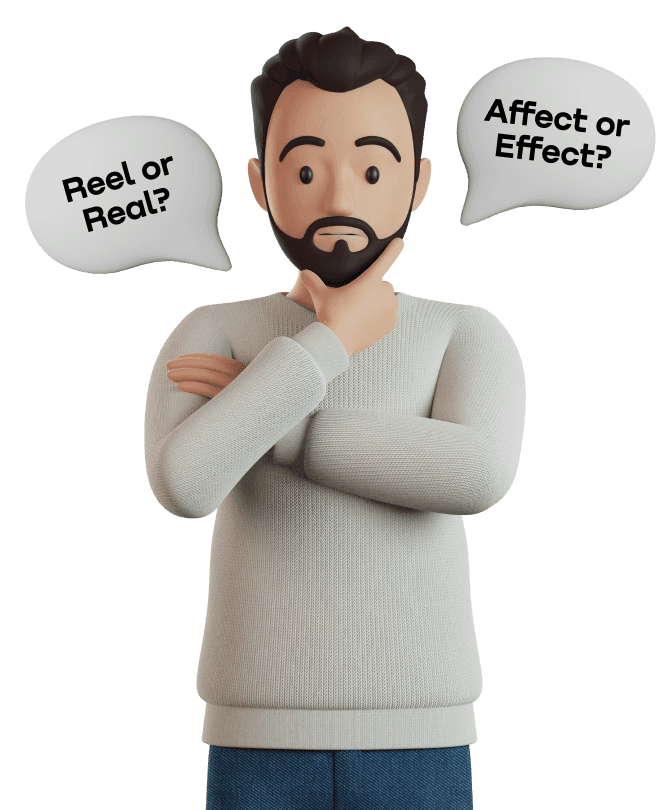Translucent vs Transparent
What’s the difference between them?

Translucent
Meaning:
Admitting light but diffusing it so that objects beyond cannot be clearly distinguished.
Examples:
1. I was enamored with the translucent glass bowl that was on display.
2. The translucent curtains allowed the sun to shine through the windows.
3. The butterfly's wings were a beautiful translucent blue.
Transparent
Meaning:
Allowing light to pass through so that objects behind can be distinctly seen; see-through.
Examples:
1.The glass door was nearly transparent, allowing light to enter the room.
2.The politician's promises were completely transparent, raising questions about her integrity.
3.The organization had a transparent agenda, which was clearly outlined in their mission statement.
Learn similar and opposite words to spot the difference
Synonyms
Antonyms
Translucent
1. Transparent
2. Sheer
3. Diaphanous
4. Permeable to light
5. Allowing light to pass through
1. Opaque
2. Solid
3. Cloudy
4. Obscure
5. Not permeable/impermeable
Transparent
1. Clear
2. Translucent
3. Limpid
4. Lucid
5. Sheer
1. Opaque
2. Obscure
3. Cloudy
4. Incomprehensible
5. Not Revealed
Tricks for mastery
Useful tips to understand the difference between confusing words "Translucent", "Transparent".

1. Translucent refers to the ability to allow light to pass through but not to see clearly what is on the other side.
2. Transparent refers to the ability to see clearly through the object
3. A helpful tip for remembering the difference is to think of a pane of glass. If it is transparent, you can see clearly through it. If it is translucent, you can only see a blurred image.
Practice English with the Promova app and avoid misusing confusing words
Frequently asked questions
When should 'translucent' be used?
Translucent should be used when describing something which admits light but diffuses it so that objects beyond cannot be clearly seen. Often this is used to describe things which are partially see-through but not completely.
When is the appropriate context for using 'transparent'?
Transparent should be used when describing something which allows light to pass through so that objects behind can be distinctly seen; it is the opposite of translucent in that sense. Transparent is usually used to describe something which is completely see-through.
Do the two words share the same pronunciation?
No, the two words do not share the same pronunciation. Translucent is pronounced with the emphasis on the second syllable (trans-LOO-scent), whereas transparent is pronounced with the emphasis on the first syllable (TRANS-par-ent).
What are some common mistakes people make when using these words?
One of the most common mistakes is using the words interchangeably. The two words have different definitions and should be used in different contexts. Additionally, some people mispronounce the words, confusing the syllable emphasis in the two words.
Fill in the gaps to check yourself
1. The window was ___________, allowing us to clearly view the garden outside.
2. She was wearing a ___________ dress, which made her appear almost ghost-like.
3. He put on a pair of ___________ glasses to add something special to his style.
4. The ocean was like a sheet of ___________ blue glass, reflecting the sky above.
5. She chose a ___________ material to make the curtains for her bedroom.
6. The ___________ plastic box allowed us to see what was inside without opening it.
1. Transparent.
Explanation: This word is used to describe something that is able to be seen through. It enables people to observe what is on the other side, such as in this case the garden outside.
2. Translucent.
Explanation: This word is used to describe something that is not completely transparent, but still allows a blurry view of what is on the other side. In this case, the dress appears to be almost ghost-like, suggesting it is not completely transparent.
3. Transparent.
Explanation: This word is used to describe something that is able to be seen through. Sunglasses are often made from a transparent material in order to allow people to see clearly, while protecting their eyes from the strong rays of the sun.
4. Translucent.
Explanation: This word is used to describe something that is not completely transparent, but still allows a blurry view of what is on the other side. In this case, the ocean is described as a sheet of glass, suggesting that it is not completely transparent, but still allows a blurry view of the sky above.
5. Translucent.
Explanation: This word is used to describe something that is not completely transparent, but still allows a blurry view of what is on the other side. Translucent materials are often used to make curtains because they provide some privacy, while still allowing light to pass through.
6. Transparent.
Explanation: This word is used to describe something that is able to be seen through. In this case, the plastic box enables people to view what is inside without having to open it.
Get a gift by subscribing to our newsletter!
Download the PDF with a list of commonly confused words made as flashcards for comfortable learning.
List of Commonly Confused Words
Finding your way around the English language can be hard, especially since there are so many confusing words and rules. So, a list of the most confusing words in English is an extremely useful tool for improving language accuracy and sharing the ideas clearly.